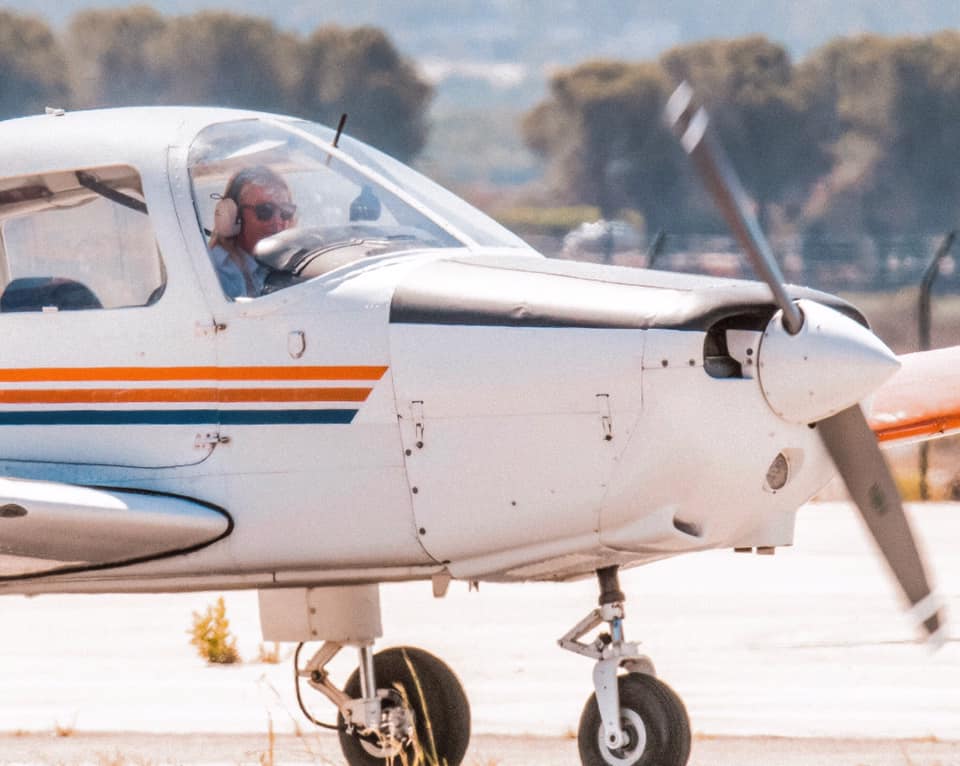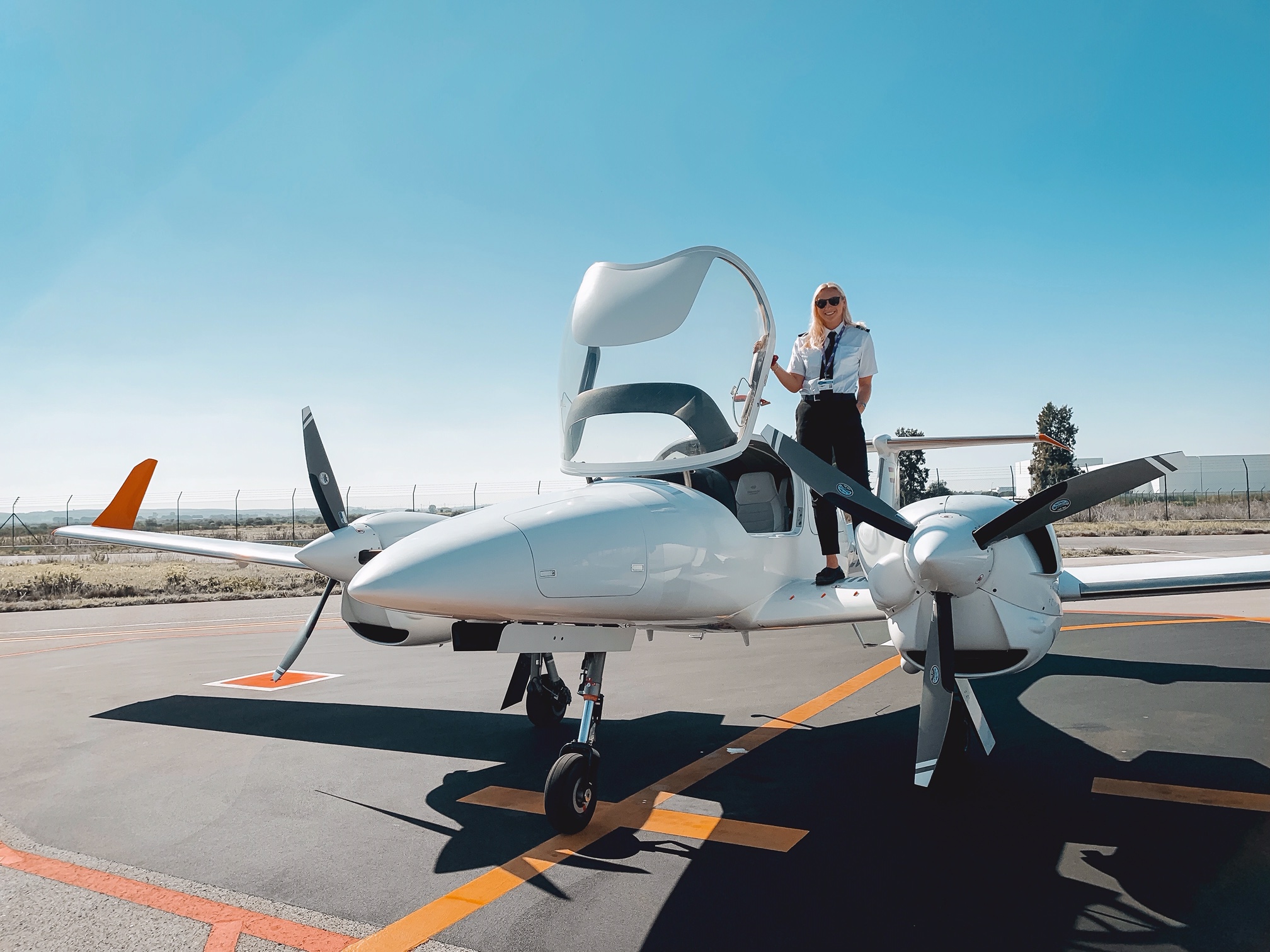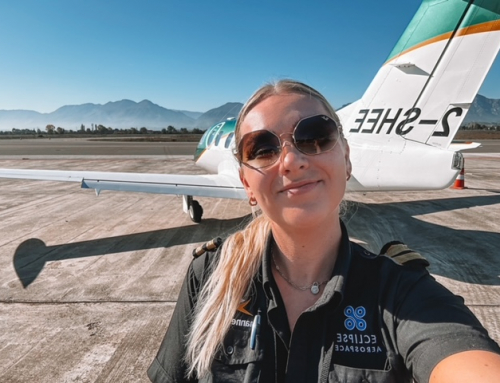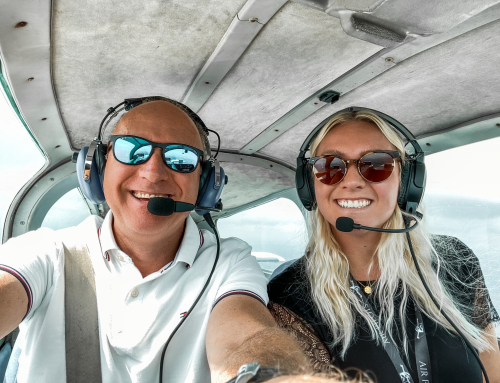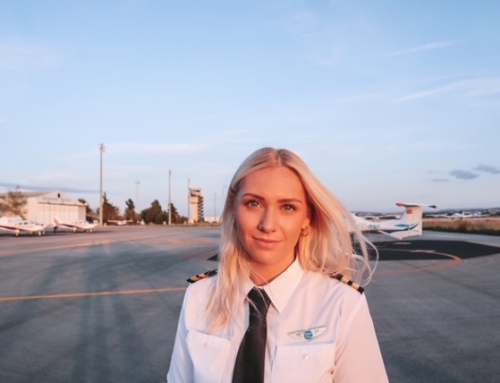Wow, it’s been a little while, hasn’t it.
A lot has changed! I quit my job as cabin crew for British Airways about a year and a half ago, and I traded in the chicken & beef to fly the plane instead – all be it tiny planes instead of Dreamliners!
I’ve been studying at a flight school in Spain since February 2019, and I’m asked allllll the time for tips & information of how to your foot in the aviation industry door as a cadet pilot, so I thought it might be time to share my little story and what I’ve learnt on the way. If you’re a wannabe cabin crew looking for info, check out this guide instead.
All these ideas and understandings are my own from my experience undertaking an airline sponsored MPL, and there is no right or wrong way of doing anything.
RESEARCH
There is very little that can prepare you for the journey to the flight deck. This was particularly the case for me because I come from a very un-aviation-ey family. Sadly a few nurses and some IT consultants couldn’t give me much of an answer to my questions on Bernoulli, but never mind.
My two years at BA, however, definitely gave me a little glimmer of what it was like to be a pilot. I was lucky (& pushy) enough to get into the flight deck on most flights. Whether it was for landing, taking in cargo documents, or just to pop a couple of cups of tea in, I always managed to worm my way in to get answers to my questions – even if it did make me look like a Flight Deck Floozy.
I researched online the different schools, their prices, how they train their cadets and the programmes on offer.
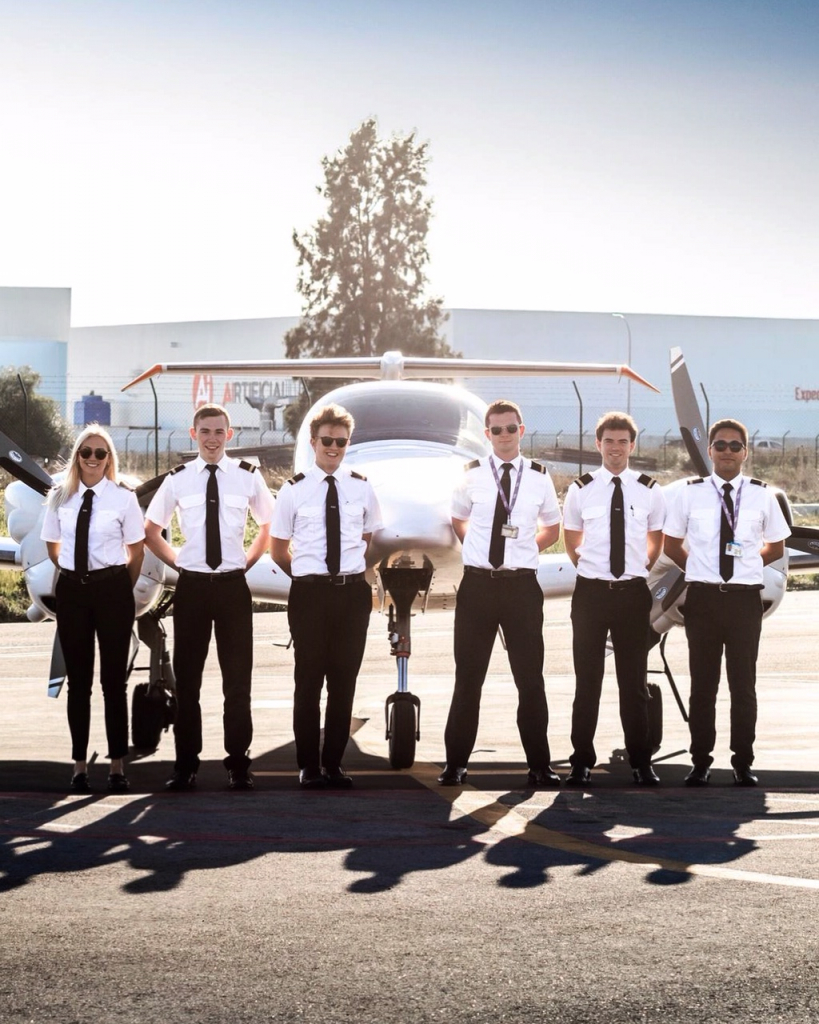
MODULAR vs INTEGRATED
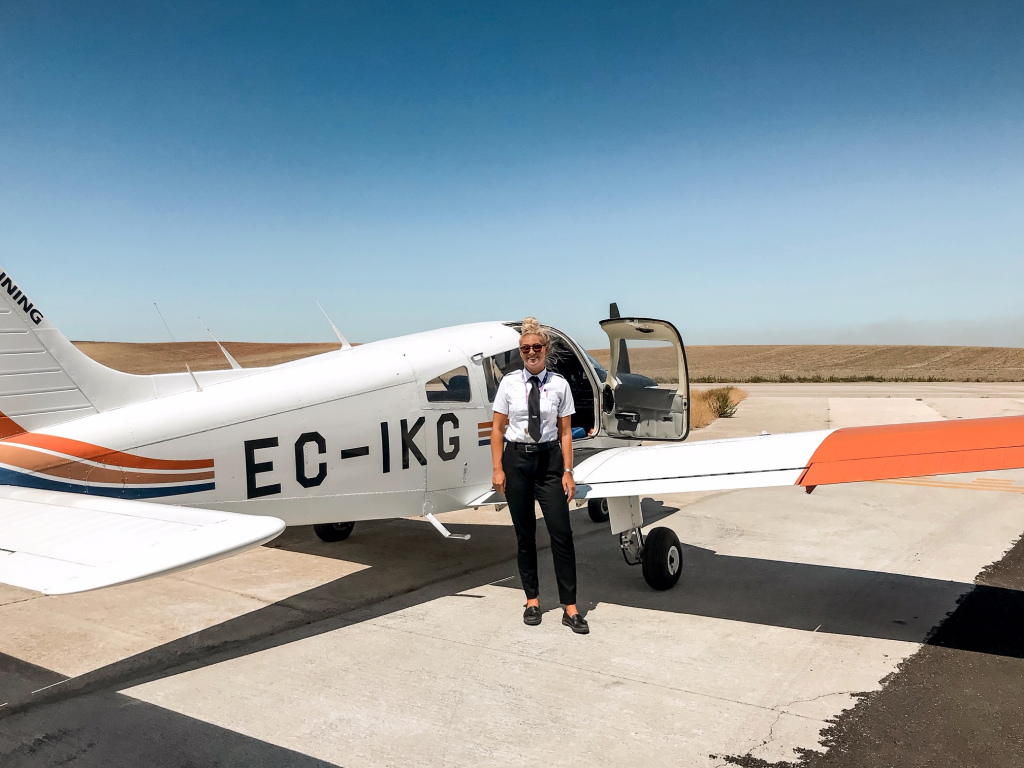
The Modular method is almost a way for you to set your own pace on your training journey, something ideal for juggling alongside a full time job. On the other hand, the Integrated Course is usually around a year and a half of full time training. The price laid out for this method mostly includes everything, such as uniform, ground school tuition, equipment, exam fees, flight training and the appropriate ratings. This was the best option for me, as I really wanted the structure of an all encompassing course, and was ready to to get my license as quickly as possible.
SPONSORED PROGRAMMES
I began looking into airline sponsored cadet programmes, and settled on the idea that despite the fierce competition for a place on one of these select courses, I would work super hard to get one. They come with a ‘guaranteed airline job’ at the end of the course, reliant on industry/company needs. They are divided into 2 categories, ATPL or MPL.
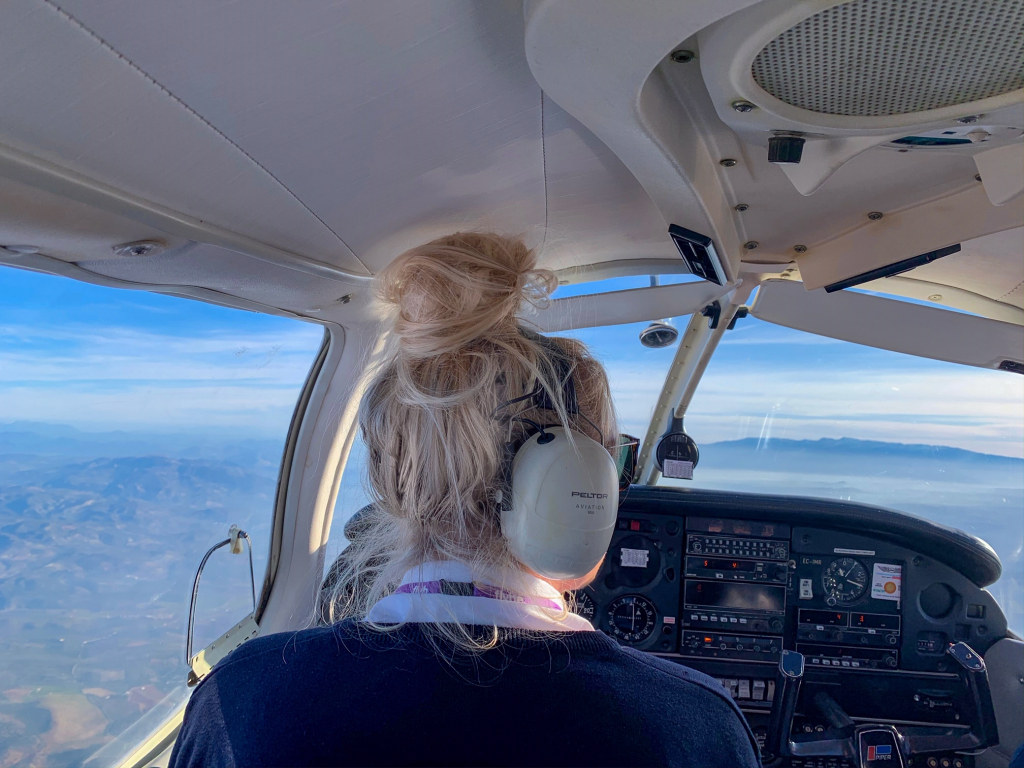
ATPL is the generic course to get you to the flight deck. It consists of ground school, single & multi engine flying, some ratings, CPL/IR and MCC; probably with an additional JOC course if so desired. The idea with this course is that on completion you can take your shiny new license to any airline and apply.
The MPL is divided into 4 stages. Ground school phase is completed as the ATPL, and then phase 2 which is single/multi engine flying hours, are shortened slightly to allow for a longer MCC phase 3. Phase 4 is undertaken at the airline sponsoring the course, where a type rating will give you an IR. The downside of this course is the fact that you are probably contracted to a certain airline for a number of hours, plus you don’t get a CPL until the MPL license transforms into a frozen ATPL after 1500 hours flying and some extra training.
FLIGHT SCHOOL ASSESSMENTS
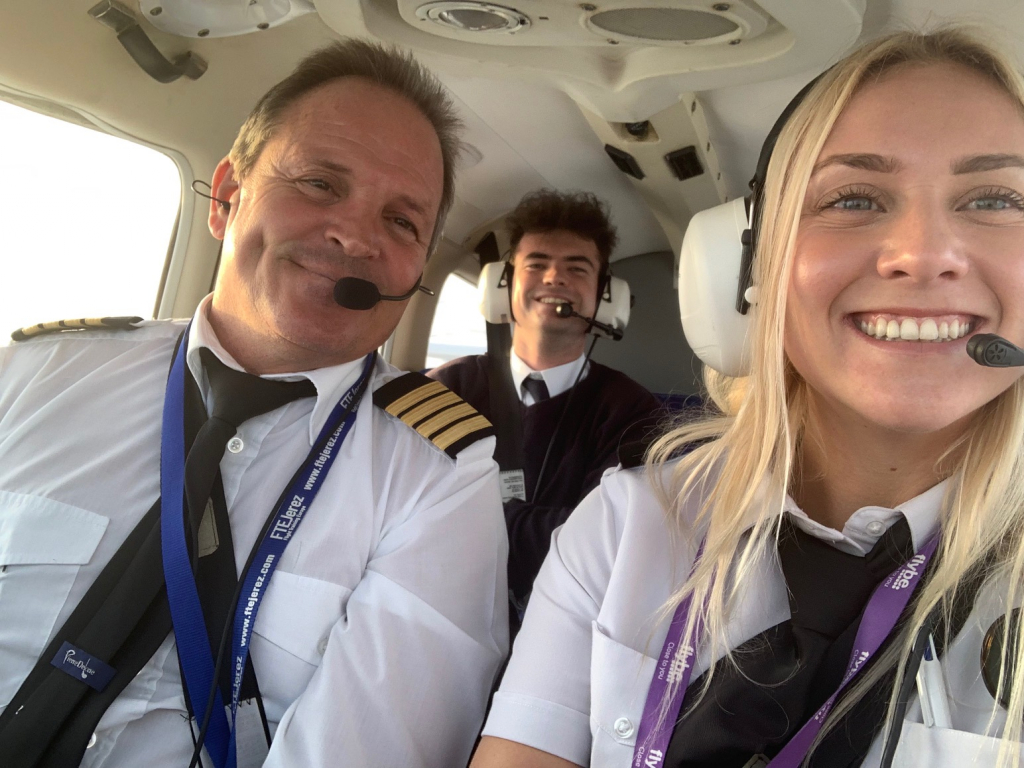
The first stage is to actually secure the invitation to an assessment. The initial applications consist of basic information, maybe some motivational questions and often a mini online test; just basic maths/English.
BEWARE – some programmes do not allow you to reapply, or even to apply to another programme at the same school, for 6 months to a year if you are unsuccessful. For this reason it is sooooo important to put your all into the questions and answers, and ensure you are well prepared for any online tests that may pop up.
I began attending flight school assessment days about a year before I actually started my programme, and this is the area I get asked about most so here are a mixture of all my best tips. I attended around 3 assessment days in 2018. One with all of the major schools – CAE, CTC (L3) and FTE Jerez. Each day was split into 4 major parts…
1. Written Exams
From what I can remember I sat 4 papers: numerical reasoning, physics, verbal reasoning and a spatial recognition test, all which can be practised online (nothing too extravagant, try BBC Bitesize if in doubt). Some of the flight schools also send out a pre-assessment day preparation package with examples of questions, which you can bet I practised umpteen times.
2. Group Exercise
Pretty much does what it says on the tin. Remember to use names, don’t speak too much or too little; reign in the sassiness (even if some of the people at your assessment are obnoxious, stupid or socially unable). You need to show good interaction skills here, so the recruiters know what you’ll be like to sit next to on the flight deck for hours on end. The aim is to work as a team, be eloquent and insightful, NOT to actually complete the task. You know the drill.
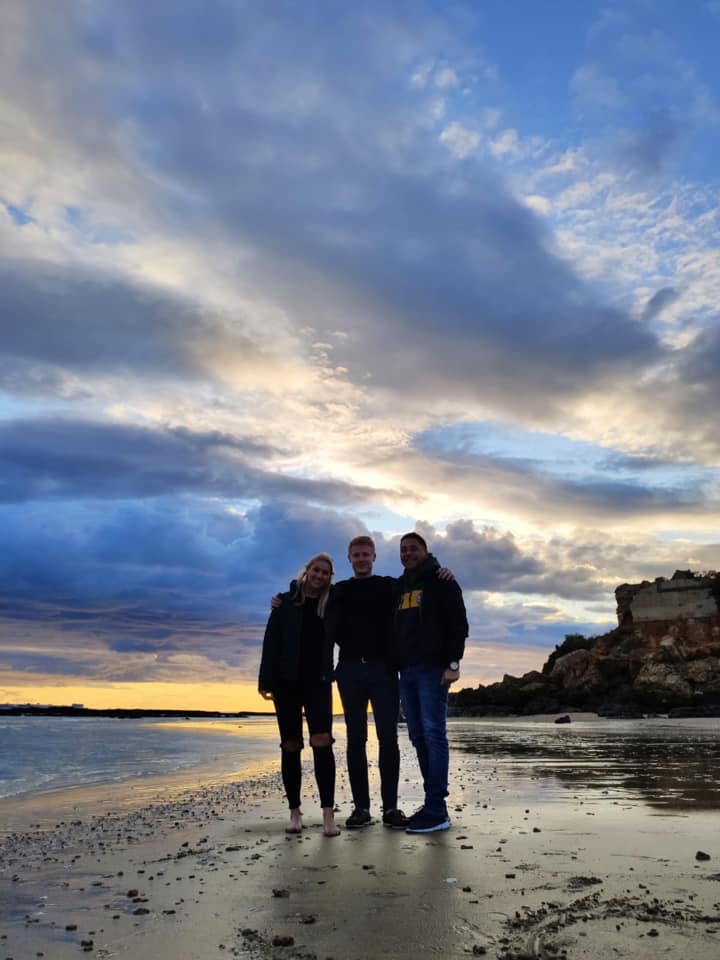

3. Individual Interview
Nerve racking but the perfect opportunity to show off a little. I had to pass a generic school one-on-one interview before I got to the airline interview stage, so prepping some key facts and ideas about the school was really useful here.
The majority of my questions were situational based, (a time when you worked in a team, a time when you experienced a difficult situation…), but I also had to answer some more technical ones relating to the forces acting in flight and flaps. Other points worth considering would be CRM & SOP questions; basically working to airline standard for safety & security, and with other key players in the industry. However, the three GOLDEN questions to prep answers for would obviously be:
- Why you want to be a pilot & can you prove your interest
- Why you chose to train at this school/apply for this airline
- What you know about the role of a pilot & the skills required
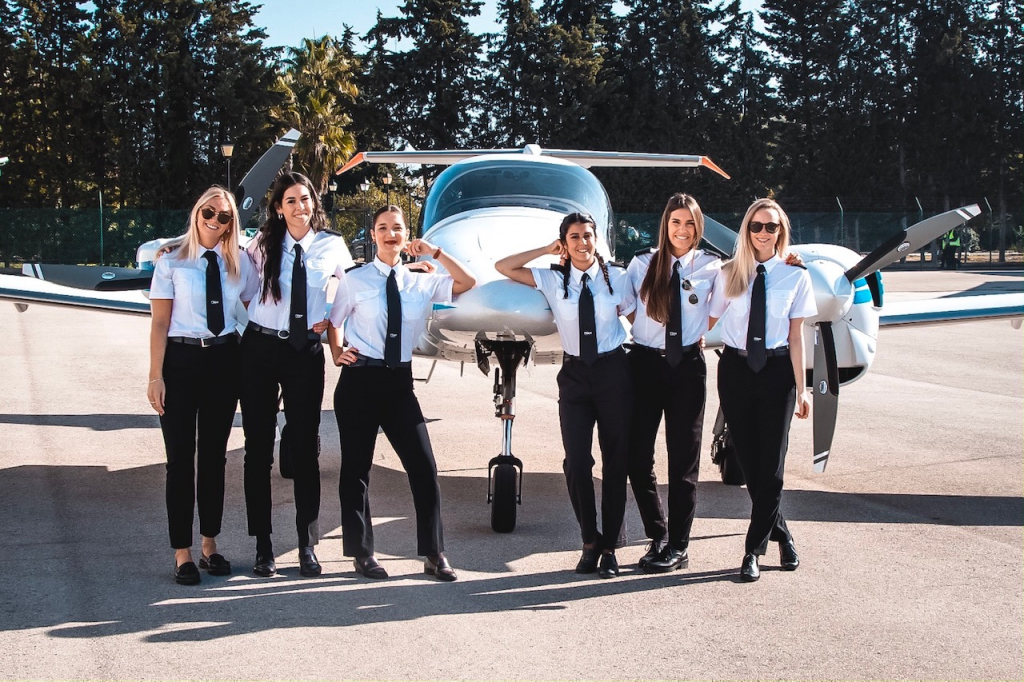
4. PILAPT
The part I was most on edge about. Essentially this test gives feedback on whether you have the coordination and physical ability – information processing, reaction times etc – to be a successful choice for a pilot programme. To prepare for this I bought myself a joystick (a tenner, if that, on Amazon), and Pilot Aptitude Test. Basically just a computer screen throwing all sorts of things at you at the same time and seeing how you deal with it. I cannot stress enough how much practising with a software benefited me.
FLIGHT SCHOOL LIFE
So you’ve found the perfect programme at your ideal school and you’ve passed all your assessments and interviews with FLYING colours. Congratulations! Now what to expect at flight school…
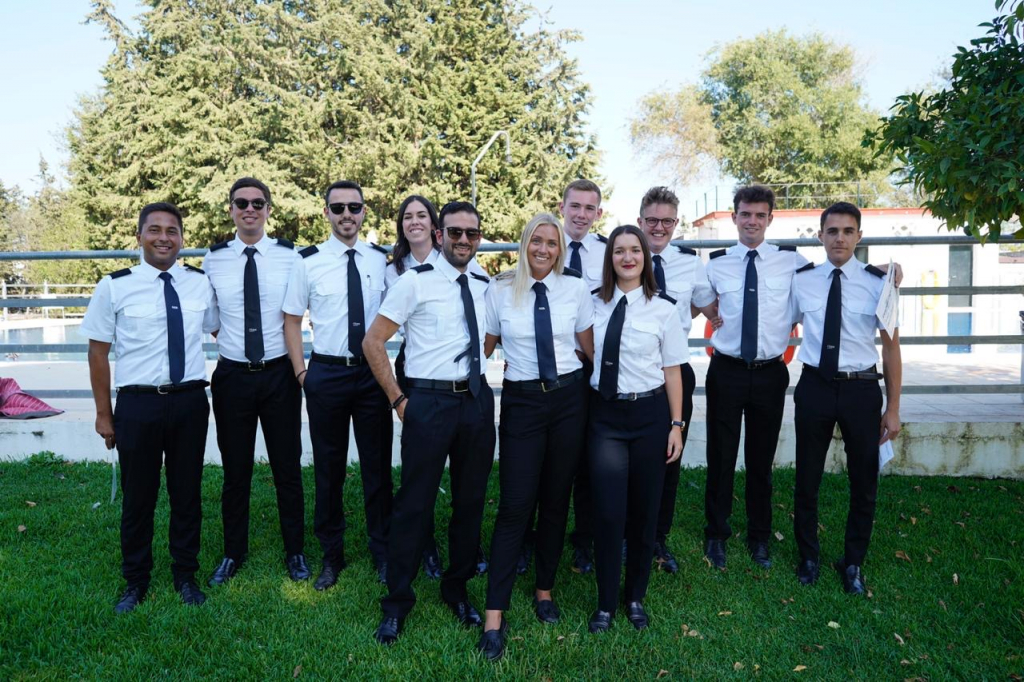
I started at FTE Jerez in the South of sunny Spain in February 2019, as an airline sponsored cadet with Flybe on an MPL course. The first 4 months of the course were purely ground school based. You can watch the planes through the fences, but that’s as close as you’ll get! The ATPL EASA theory is separated into 2 chunks at FTE: AGK, met, POF, GNAV, RNAV and instruments before flying phase one, and then the last 8: air law, aircraft perf, flight planning, comms (IFR & VFR), human perf, and mass & balance after it.
On this course, phase 1 flying is undertaken in a PA28, and I went solo for the first time after 11 hours of tuition – something that will probably be the craziest and most amazing thing you have ever experienced. FTE also holds a Solo Spouts Ceremony consisting of a formal presentation, followed by a spout filled with God knows what and a jump in the pool. Gutted for you if you’re a February Spouts and leaping into some freezing cold, green gunk.
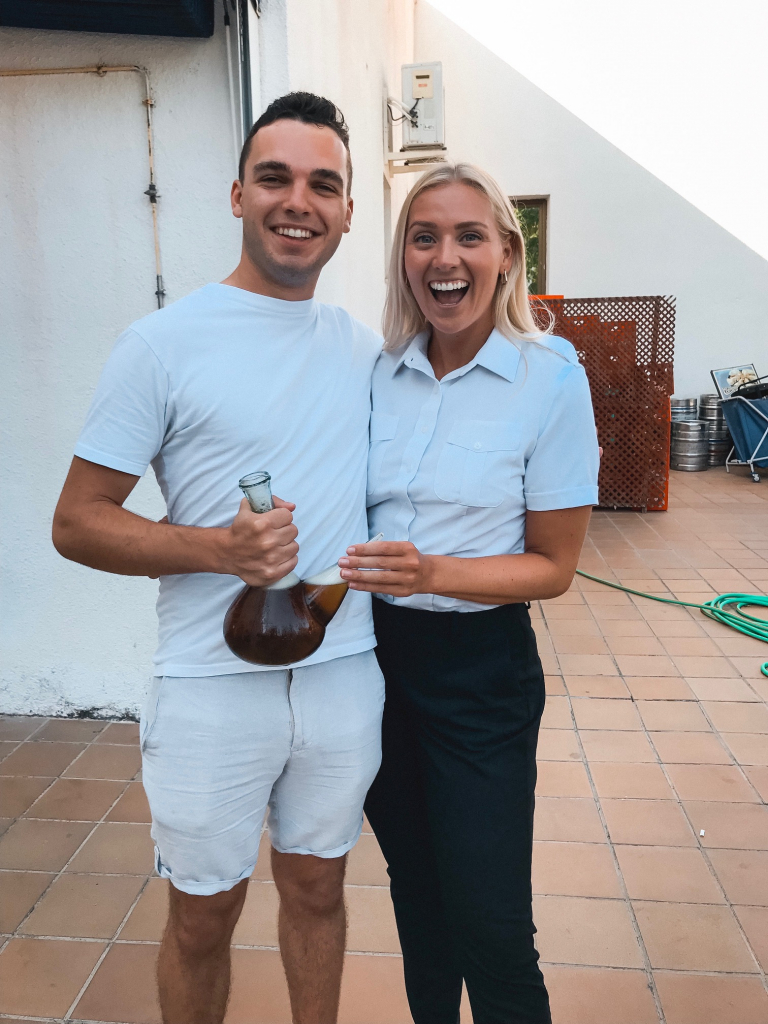
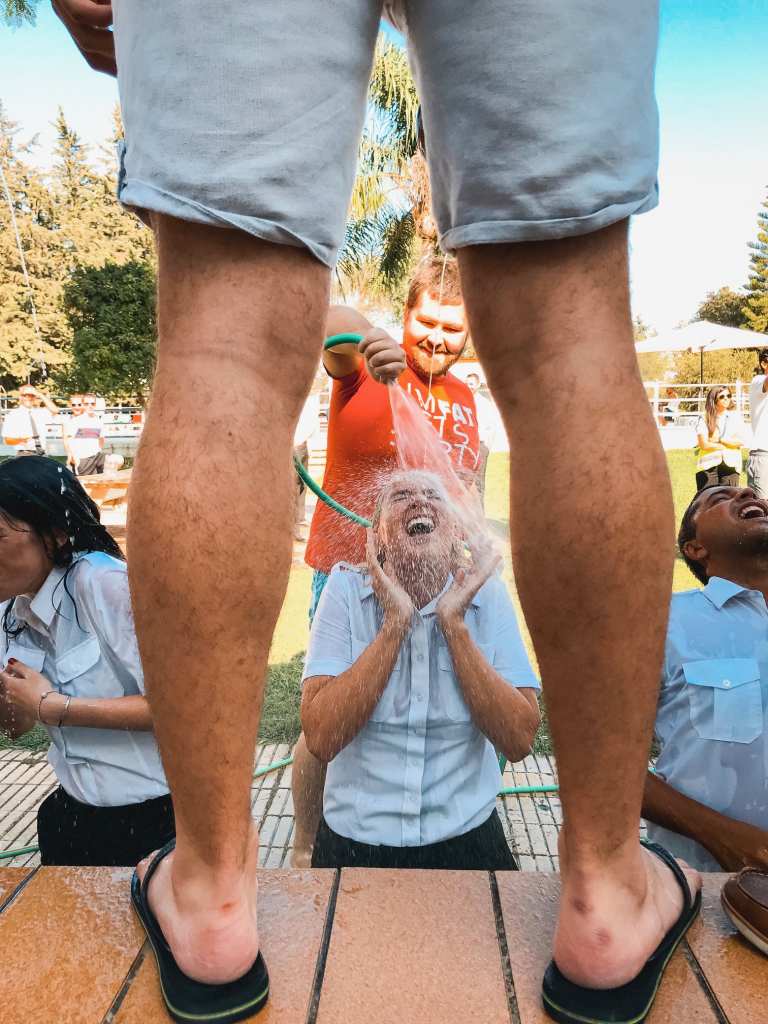
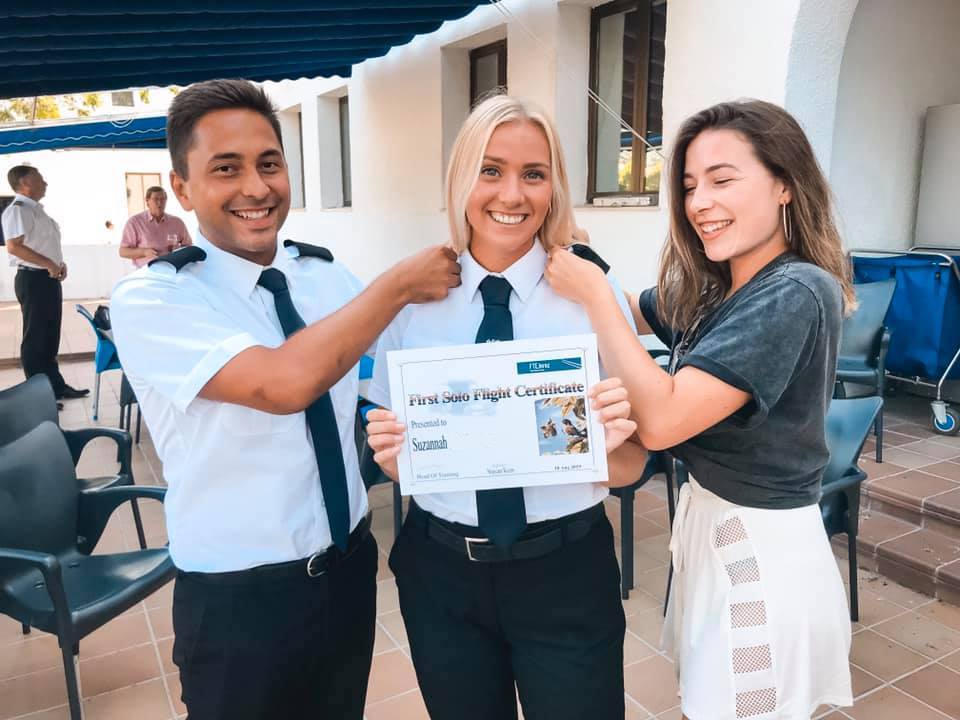
Phase 2 is the rest of the SEP, and then onto multi engine in the DA42, before the MCC in the Boeing 737 or A320 sims.
I can only speak from my experience at FTE, but it really is the perfect place to study and learn to fly. Even though ground school is horrendous, and you will have your head in a text book for 18 hours a day, and practically go blind from banking, it is totally worth it. It was the hardest I’ve ever worked, and I’m so proud of myself for the results I achieved, but that’s not to say I didn’t experience my fair share of HUGE meltdowns, ‘is it all even worth it’ moments and delirium.
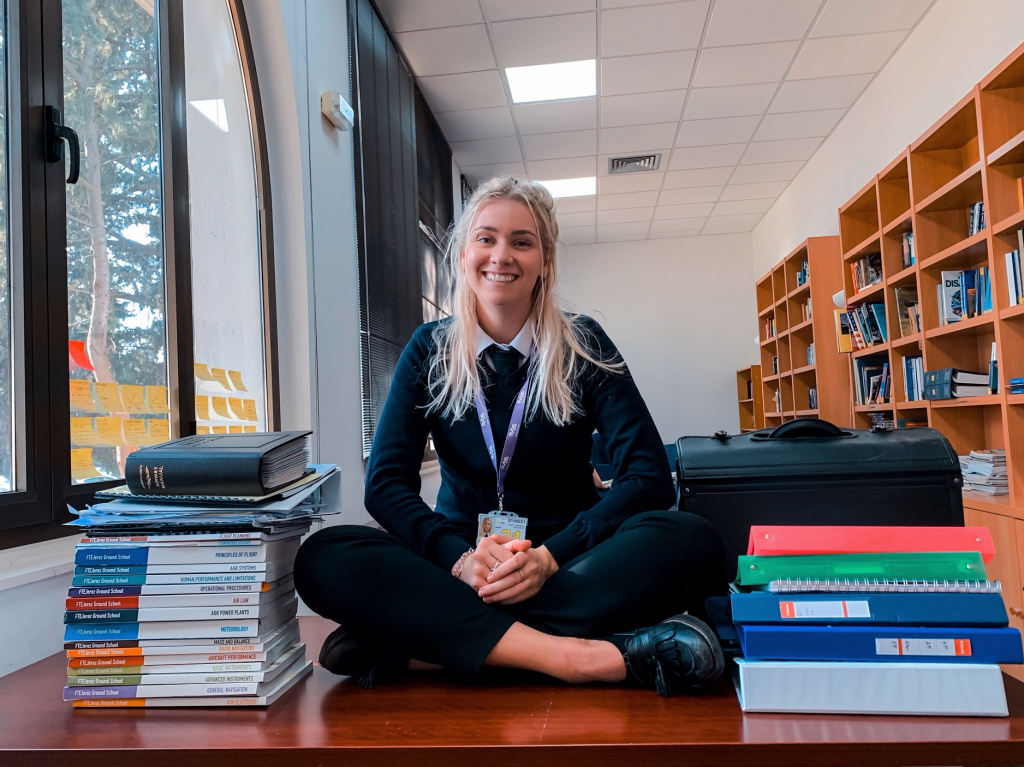
Weekends (well, Friday nights and Saturday mornings), are for relaxing, and theres so much to do in Jerez de la Frontera. It’s half an hour from beaches, an hour from Seville, reachable from Gibraltar, and has the cutest town centre with endless sherry & tapas places. The school is based at the airport so everything is a 20 min taxi or short train ride away, and you can also hire a car straight from Arrivals. The bar is always buzzing on a Friday night, and with happy hour from 5, you can bet that a good amount of people turn up to burger night at the canteen half sloshed.
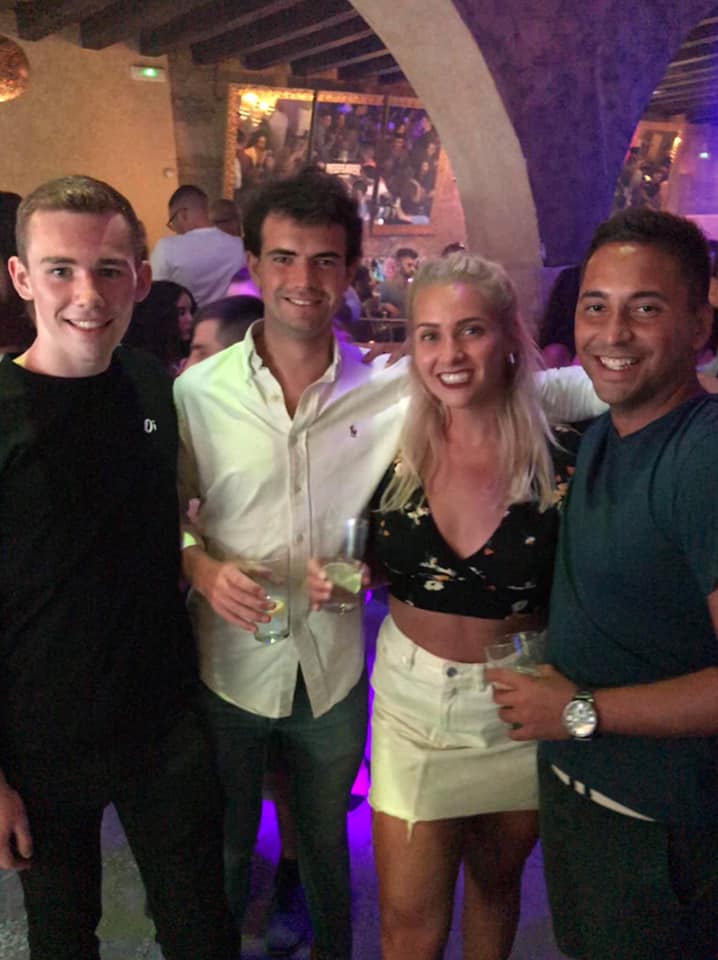
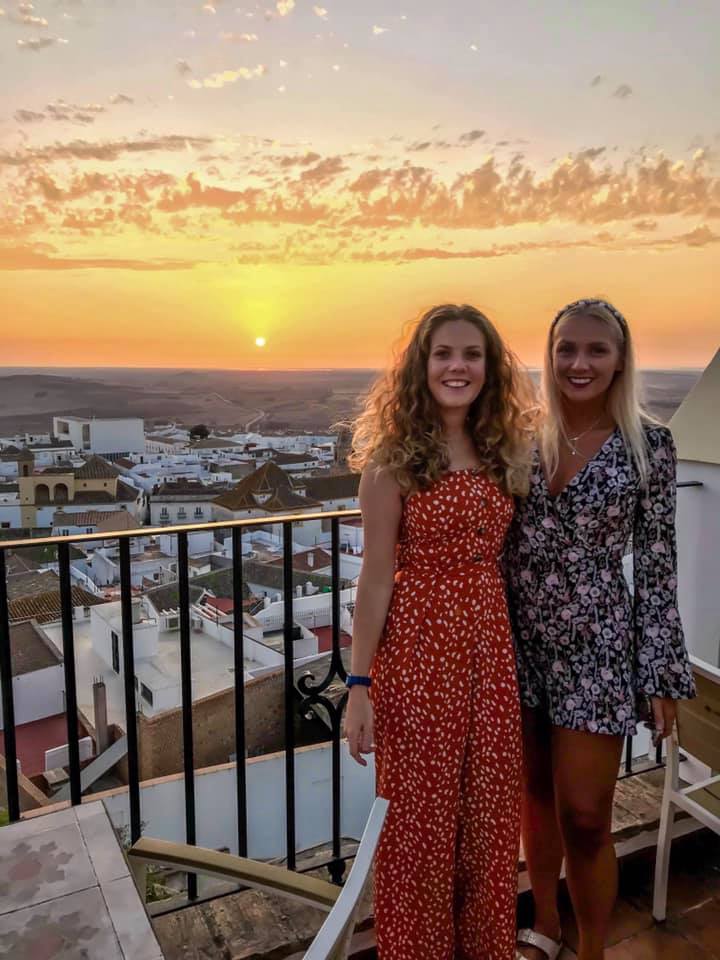
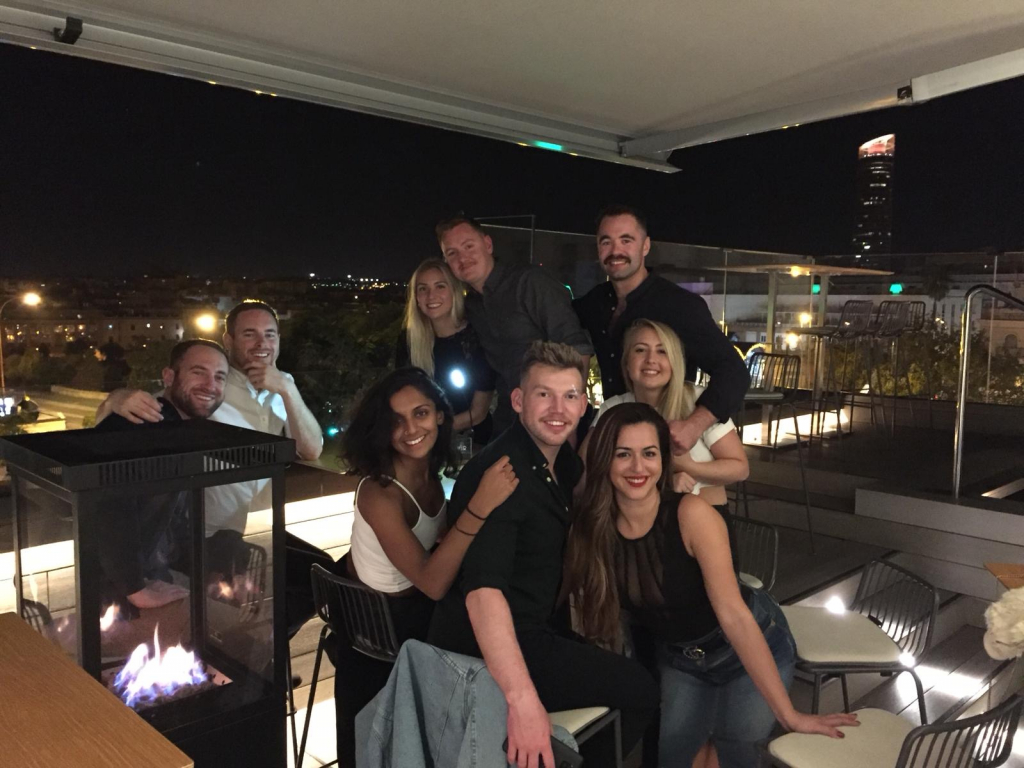
The pool is open throughout summer, and there is no better feeling then peeling your uniform off after a sweaty Warrior flight (38 degree heat), and jumping straight in, before downing a Corona and chilling in the sun listening to some questionable Reggaeton from the Spanish guys’ speakers. There’s also football pitches and tennis courts, and a lovely roundabout to walk to when you’re stressing. Work hard, play hard and all that.
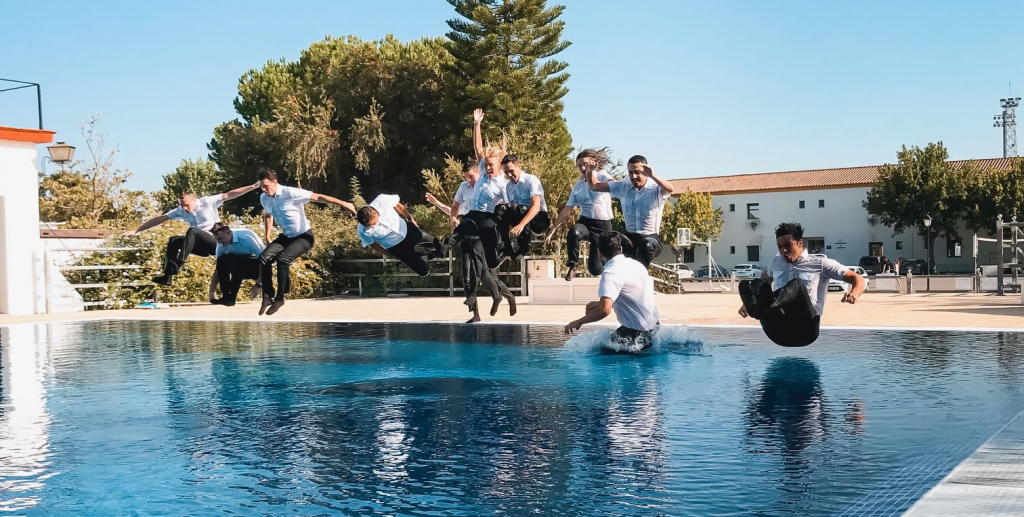
FINALLY
…a few things I’d suggest considering before starting a journey to the flight deck:
Very little can prepare you for it, and it can be compared to nothing. Everyone has a different experience, I’m just so lucky mine has been so positive. Despite that, there have been some bumps in the road. Surround yourself with positive people, ignore the over-competitive vibes, and take some home comforts with you (marmite). That’s a winning combo right there.
You can never be too organised at flight school. Turn up 15 mins early for sims, or you will be shouted at by angry Scotsmen. Try and wear the uniform as properly as you can or suffer the consequences of frequent humiliation from ex-RAF ground school instructors. And finally, buy the whole of the stationary store. I’m talking post-its, HB pencils, little notebooks, highlighters, page markers, memory cards… I may be one of those lame kids who used to spend pocket money on a new pack of scented gel pens, but seriously, you will need to make notes on everything so might as well make them pretty and easy to read.
Really, really choose a course that suits you. You have to think of all eventualities. Unfortunately, I was left heartbroken when my airline sponsor went under, leaving me a couple of weeks from finishing an MPL, with no job, and a potential £30,000 fee to pay overnight to convert training paths to a new license. The school were super supportive, and helped me trade in my 737 sim for the little Warrior once again, to start hour building and working towards a CPL/IR as part of an ATPL. The industry then completely collapsed in March 2020 with the COVID-19 pandemic leaving the whole of my future and my training hanging in the balance, but more on that on another post…
GOOD LUCK!
